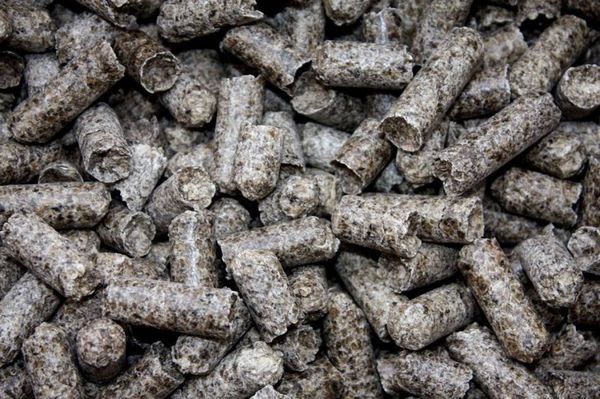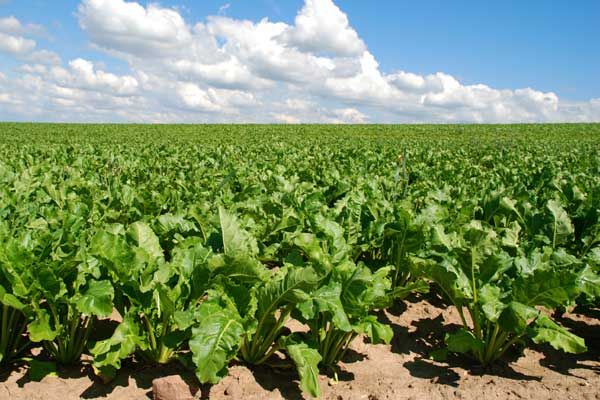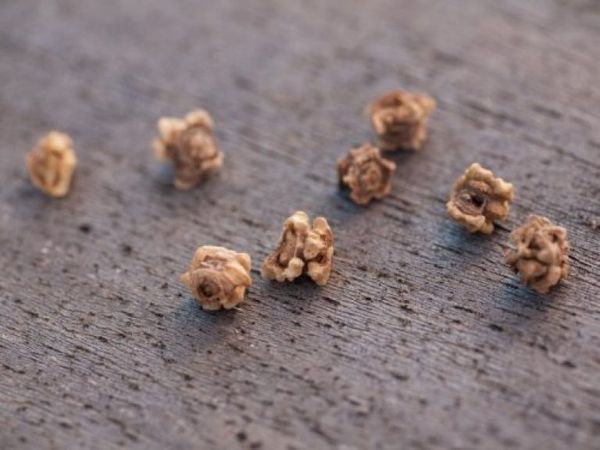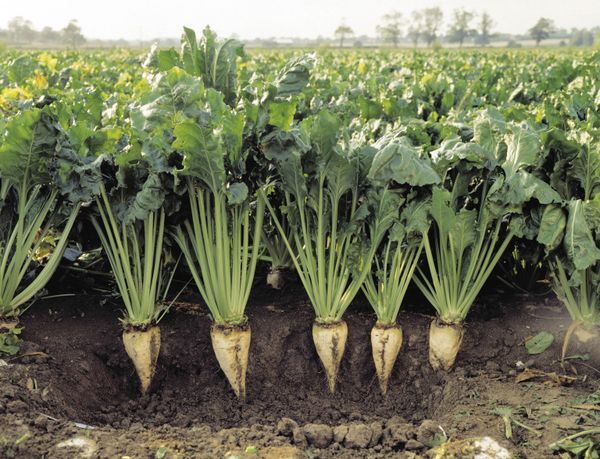Modern types of sugar beet is the fruit of the work of American breeders. In 1747, scientists from America found that white beets contain the same amount of sugar as sugarcane - 1.3%. Now technical hybrid varieties, bred by breeders specifically for the production of sugar, contain more than 20% of the natural substance. Despite the fact that this is a technical culture, people have adapted to use it in food, and as a folk remedy, and as feed for livestock.
Table of contents
Characteristics of sugar beet
White sugar beet is a vegetable crop, a two-year root vegetable, a variety of the usual red. In the first year it forms a large, oblong, dense, fleshy root crop and a powerful socket of large leaves in the ground part.
This is the most important sugar-bearing crop, which grows on a huge area of cultivated land. The level of sucrose ranges from 8-10 to 20% and directly depends on the climatic conditions of the growing region, agrotechnical conditions, since the culture requires a lot of heat, moisture, and sunlight.
Especially a lot of solar heat is necessary for the vegetable during the ripening of the root - from August to the end of October. It is during this period that sugar accumulates in it.

From production waste receive:
- bagasse - waste in the form of chopped beets, used as feed for cattle, pigs;
- syrup - used in the food industry for the production of yeast, citric acid, glycerin, organic acids and alcohol;
- defecate (or defecation mud) - lime fertilizer for plants.
In addition, sugar is produced from ethanolrequired in the technology of gasoline production.
Growth history
The production of sugar from beets began in the 19th century in central Europe (New Silesia), where the plant's homeland is located, and was rapidly spread. In the first half of the 19th century, beets were planted and grown already in the territory of modern Russia and Ukraine.
Presence of fertile chernozem soil and warm climate determines the cultivation areas of culture: Ukraine, Belarus, Georgia, the black earth regions of southern Russia, as well as the countries of southern and central Europe.

For 2014, the leaders in growing crops and producing sugar from it are:
- France - about 40 million tons;
- Russia - a little more than 30 million tons;
- Germany - 30 million tons;
- USA - 28.5 million tons;
- Ukraine - 16 million tons;
- Poland - 14 million tons
Food or livestock feed
Of course, first of all, this culture is technical, but the roots are good feed for pig and cattle breeding.
Botva and rhizomes have almost the same nutritional value: 100kg of beet contains 25 feed units (it is considered that 1 feed. Unit equals 1 kg of oats nutritionally) and 1.2kg of healthy protein, and 100kg of green tops - 22 feed units and 2.2kg of protein .
At the same time at the time of harvest mass of leaves and root crops approximately 1: 2. The share of foliage can be from 40 to 60% by weight of the vegetable.

But besides this, sugar beets are often used. in dietary and traditional medicine. The plant has a rich vitamin and mineral composition: iodine, phosphorus, magnesium, copper, iron, calcium, vitamins of group B, PP, C, betadine, pectins.
This product enhances immunity, hemoglobin, has a beneficial effect on the work of the cardiovascular system, improves the functioning of the digestive system, removes toxic substances from the body.
Vegetable has contraindications for use in kidney disease, diabetes, obesity due to the high sucrose content.
Features of cultivation and conditions of cultivation in Russia
Cultivation and planting of sugar beet is a very laborious process, requiring exact observance of all the terms and scheme of agricultural engineering.
Seeding technology
The soil is plowed in the fall, to a depth of 30 cm, after making a complete set of fertilizers. In the spring before sowing the soil is harrowed, cultivated and leveled.

Sow seeds at air temperature 8-10 degrees heat to the depth 5 cm. 5 days after sowing, pre-emergence harrowing is performed to destroy weeds and loosen the soil.
Shoots appear already on the 8-10 day after sowing. The first loosening of the soil is carried out after the appearance of the first true leaves at a depth of 5-7 cm.
Next step - thinning of shoots (bouquet). This is the most difficult, time-consuming, but important process, after which the strongest and strongest beetroot remains on the field.
Subsequent care for the crop consists in loosening the soil between the rows and abundant watering. up to 4-5 times a month. Watering is stopped in the second half of September, 7-10 days before the harvest.
Harvesting

Green leaves are not able to persist for a long time, so the collected culture immediately sent to the processing enterprises. It starts the process of obtaining sugar from rhizomes, and tops are processed for feed.
Obviously, the whole cycle of growing and processing vegetables is quite laborious and expensive. Even in spite of the fact that the productivity of this crop is 100%, it is quite difficult for producers to achieve good profitability both from crops and from processing enterprises.
Nevertheless, sugar remains a very popular everyday food product, and its production is quite a reasonable and absolute necessity.
